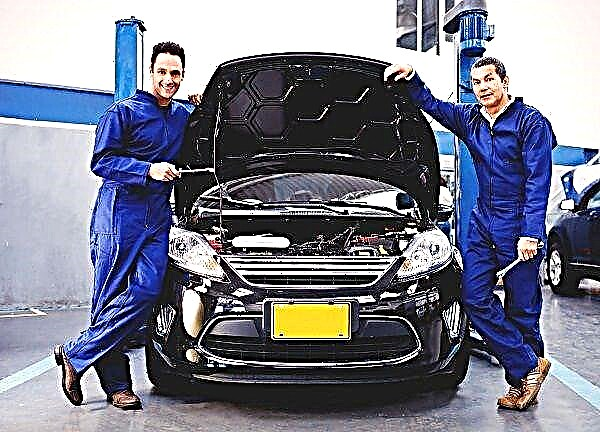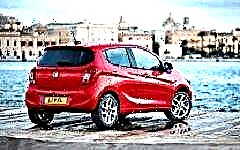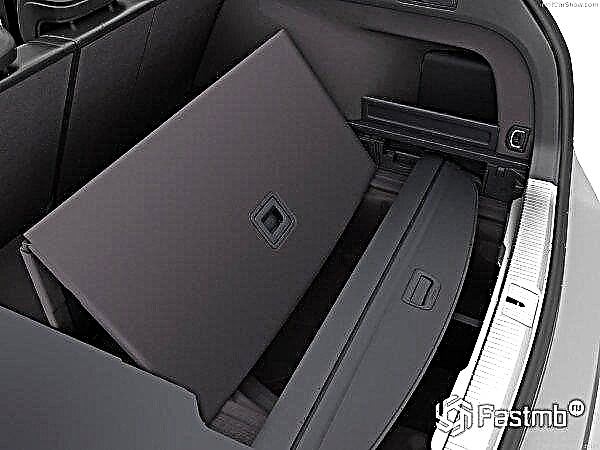The concept and principle of operation of the anti-lock braking system - ABS. ABS work diagram for a Volkswagen car.

The content of the article:
- A little about the ABS system
- System advantages
- Composite mechanisms
- How the ABS system works
- How to use it correctly
In an extreme situation on the road, one or several wheels are blocked in the car. In this case, the grip of the car on the road is very poor. Locked wheels stop keeping the car on a straight line, and the car starts to throw on the road. That is, the driver loses control over the car, while the vehicle begins to actively drive in different directions.
What is anti-lock braking system ABS

A system such as the Anti-lock Braking System, or better known to everyone as ABS technology, prevents the wheels from locking when the car is braking, which allows the driver to maintain excellent handling over his car. This technology also improves braking performance itself by shortening braking distances on both wet and dry roads. The advantages of this system include even tire wear.
What does this traction control system allow?
- Brakes effectively on slippery, wet roads.
- Allows the driver to better control the vehicle.
- Prevents the car from skidding.
What the ABS system consists of

Modern ABS technology consists of the following components:
- Angle sensors at wheel speed.
- Squeeze sensor in brakes.
- ABS control unit.
- Hydraulic block.
- A light inside the car (mainly on the dashboard).

ABS circuit from Volkswagen AG
Correct functioning of the ABS system is considered to be extremely important for the protection of both passengers and people outside the vehicle. In general, the operation of the ABS system consists of an electronic unit, also known as an ECU (electronic control unit), which collects data from sensors and controls the hydraulic control unit, mainly consisting of valves that regulate the brake pressure on the wheels.
Communication between the control unit and the sensors must be very fast. Tire position sensors are usually located on the wheel axle. The sensor must be stable and maintenance-free. These tire position measurements are processed by the control unit for calculation.

The hydraulic control unit is usually located in close proximity to the ECU (or vice versa), and consists of a series of valves that control pressure. All of these valves are placed close to each other and packed in a solid block.
The central control unit usually consists of two microcontrollers. These two microcontrollers interact and test each other in operation. The software that runs in the ECU has a number of functions. In particular, algorithms that control the HCU depending on inputs or control the brakes depending on the recorded wheel rotation. This is obviously the main task of the entire ABS system. In addition, the software processes information from the sensors. There are also some programs that continually test each component of the ABS system for correct operation.
The principle of operation of the ABS system

Anti-lock braking system (ABS) works as follows:
When braking, fluid is pushed out of the cylindrical brake ports to the HCU intake ports. This pressure is transmitted through the four normally open solenoid valves inside the HCU and through the HCU outlet ports to each wheel. If the anti-lock brake control module senses that a wheel is about to lock, based on the signal to the sensor, it closes the open solenoid valve for that circuit. This prevents more fluid from introducing this circuit. If this wheel is still slowing down, it opens the solenoid valve for this circuit. After the wheel turns to the normal position, the anti-lock brake control module returns the solenoid valves to normal for the flow affected by the brake. The anti-lock brake control module monitors the electromechanical components of the system. Loss of hydraulic fluid in the brake cylinder will disable the anti-lock system. There are many different options and algorithms for ABS control. The computer monitors the speed sensors all the time. He is looking for wheel slip. The drive wheels are locked if the computer experiences rapid deceleration and sudden skidding.
When the ABS system is in operation, the driver senses a pulsation in the brake pedal from the rapid opening and closing of the valves. This pulsating signal also tells the driver that the ABS has been activated.
The modern ABS system is reliable and durable. Electronic sensors and system units have many fuses and special. relay. Breakdowns are often associated with improper use. The biggest impact is the wheel sensors, which will have to be changed from time to time.
ABS Operation Tips:
- Do not separate electrical connectors with the ignition on or with the engine running.
- Do not connect your car battery to another car.
- Pay close attention to the contacts on the generator, they must always be in good condition.
- If you need to weld something in the car, do not forget to disconnect all the wiring to the ABS.
- Do not heat the ABS control unit above 85 degrees for 2 hours. This is necessary if you are going to paint a car and dry it with a hot method.
In case of ABS malfunction, it is reported by a control lamp on the instrument panel. At the same time, do not worry, your car will be able to brake without the ABS.
- If this happened on the road, then stop and measure the voltage on the battery.
- If it is below 10.5 V, then this is the first sign that the battery needs to be charged.
- If the light is flashing, this is a sign that something is wrong with the ABS, namely, something is wrong with the wiring.
- If this is not the reason - contact the service station, it may be time to replace it.












